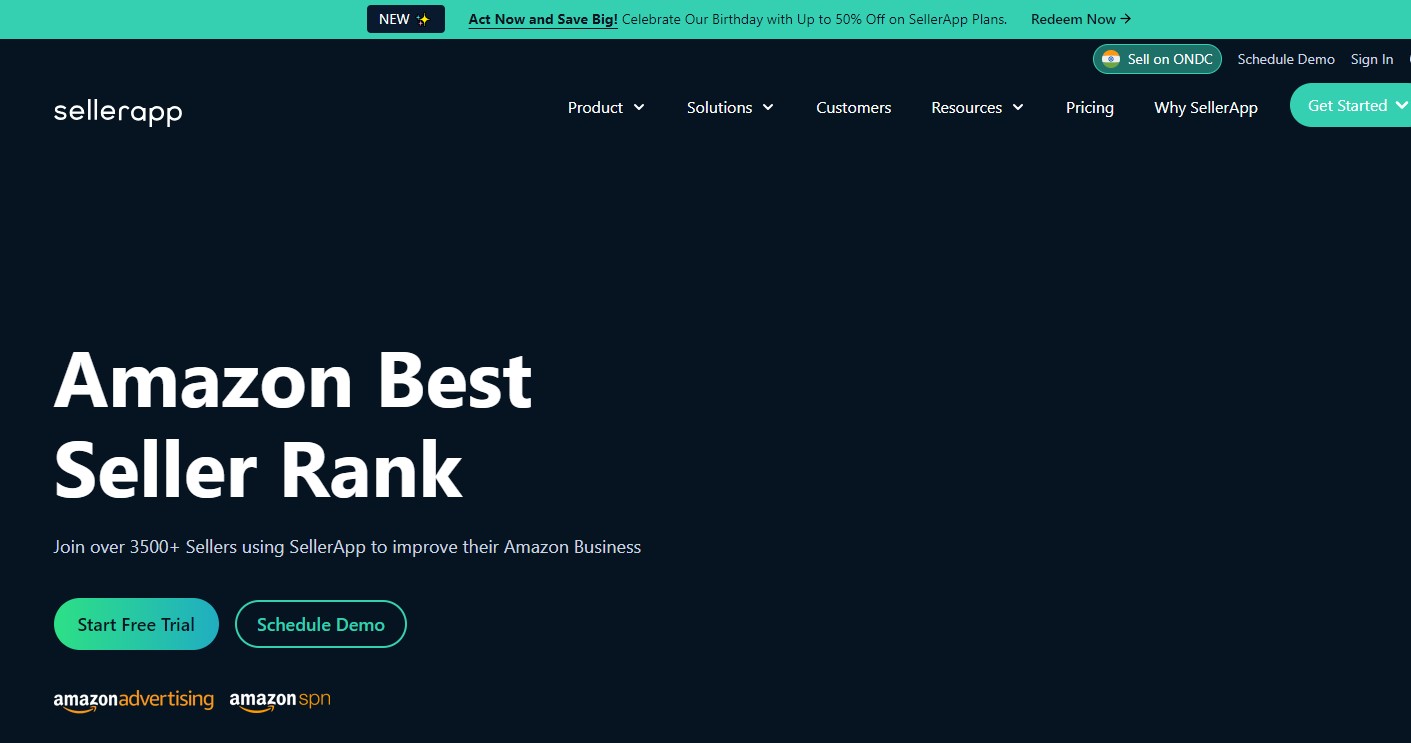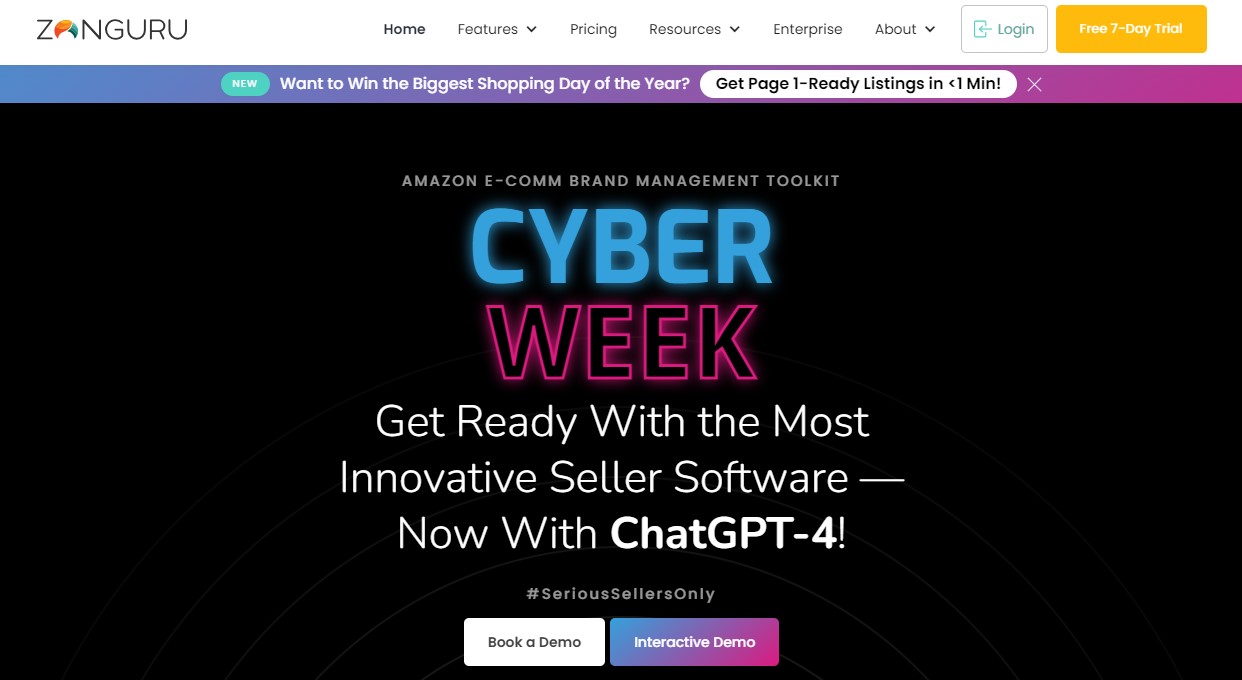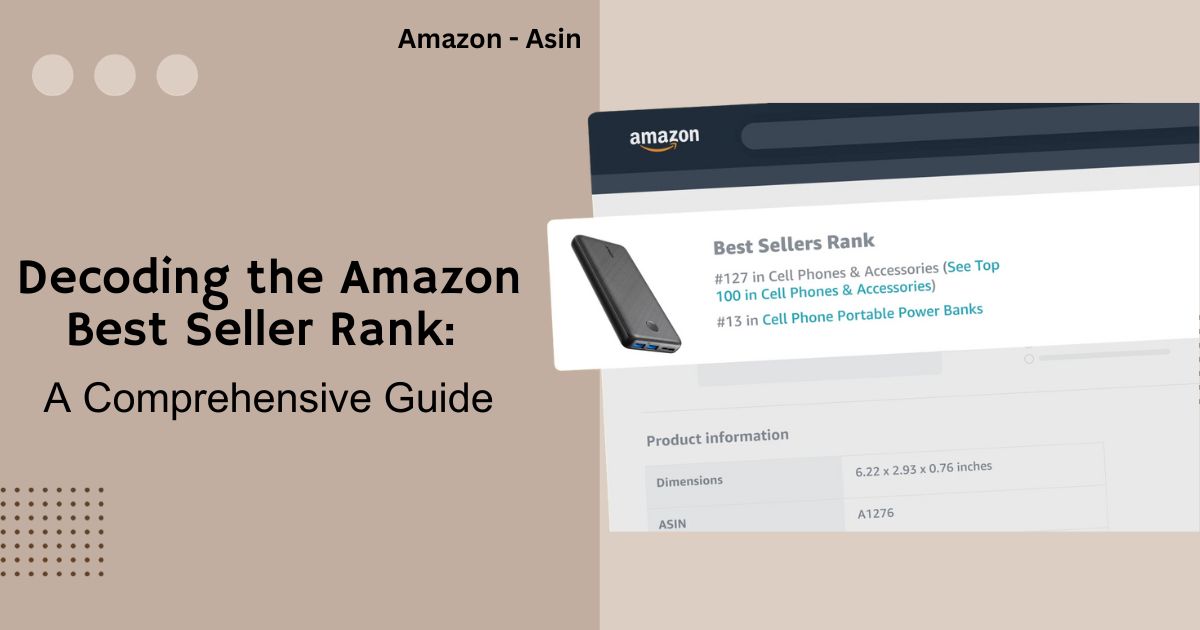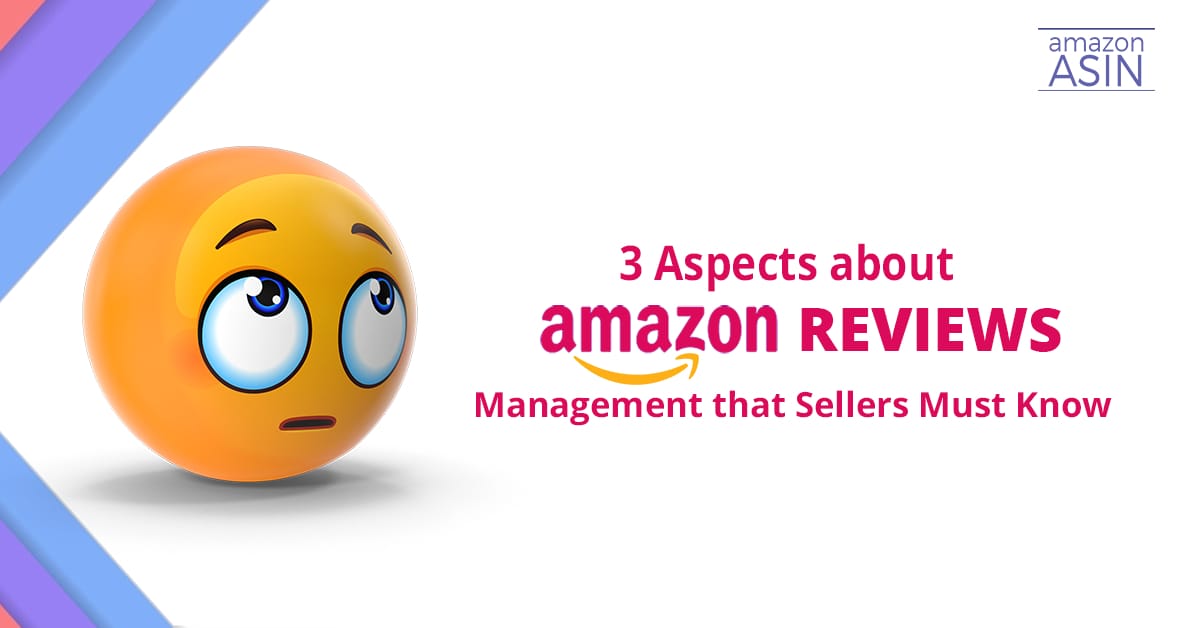In the vast e-commerce landscape, few platforms loom as large and influential as Amazon. Renowned as a global hub for online shopping, the platform offers a staggering array of millions of products. Amazon’s reach goes far beyond simple transactions; it plays a pivotal role in shaping consumer behavior, establishing market trends, and providing an unrivaled platform for sellers to showcase their products. This is reflected not only in its widespread popularity but also in its impressive Amazon Best Seller Rank, a testament to the platform’s impact on the market and its ability to highlight top-performing products.
Quick guide
- What is Amazon BSR
- Why Sellers Should Pay Attention to BSR
- How is Amazon’s Sales Rank Calculated?
- How to Find Best Seller Rank on Amazon
- Steps to Becoming an Amazon Best Seller
- Comparing BSR and Organic Ranking
- Tools to Find Amazon BSR
- Conclusion
What is Amazon BSR
Amazon Best Seller Rank (BSR) is a dynamic and real-time metric that reflects a product’s performance within its respective category on the Amazon marketplace. Essentially, it’s a numerical ranking assigned to a product based on its sales velocity within a specified time frame. The lower the BSR number, the higher the product’s sales relative to other items in the same category.
BSR is an invaluable indicator of a product’s popularity and competitiveness, serving as a quick snapshot of how well a particular item is faring in the ever-evolving e-commerce landscape. It’s important to note that BSR is category-specific, meaning a product may hold a high rank in one category and a different rank in another, depending on its sales performance.
Significance of Amazon Best Seller Rank in Gauging Product Popularity
The significance of Amazon BSR lies in its ability to provide sellers with a direct insight into the market’s response to their products. A lower BSR suggests higher sales volume, indicating that a product is not only selling well but also capturing Amazon shoppers’ attention and trust. As a result, BSR becomes a powerful benchmark for gauging a product’s overall popularity and success within its niche.
For consumers, BSR is a reliable indicator of trending and well-received products. Shoppers often use BSR as a quick reference point when making purchasing decisions, trusting that products with lower ranks have been tried and tested by many buyers.
How BSR is Prominently Displayed on Amazon Product Pages
Amazon prominently displays the Best Seller Rank on each product’s page, making it easily accessible to sellers and shoppers. Typically located in the “Product Information” section, the BSR is showcased alongside other essential details like product dimensions and shipping information. Given the popularity of a product in its category, this transparency enables prospective customers to make well-informed decisions.
The visibility of BSR serves as a competitive advantage for sellers, offering them an opportunity to showcase their products’ success and credibility. For consumers, it’s a convenient tool for quickly identifying products that align with current market trends and have garnered positive attention from fellow shoppers. In the fast-paced world of e-commerce, where choices abound, Amazon BSR is a reliable guidepost in making informed and satisfying purchase decisions.
Why Sellers Should Pay Attention to BSR
Impact of Best Seller Rank on Consumer Perception
The Amazon Best Seller Rank (BSR) isn’t just a number; it’s a powerful influencer of consumer perception. In the vast sea of products, potential buyers often rely on BSR to gauge a product’s popularity and credibility. A lower BSR suggests high sales and a product that resonates with consumers. Shoppers are inherently drawn to items others have tried and found valuable, creating a positive feedback loop that enhances consumer trust.
For sellers, understanding the impact of BSR on consumer perception is key to building brand trust. A favorable BSR reinforces the idea that their products are available and actively sought after, contributing to a positive brand image that can be a differentiator in a competitive marketplace.
Relationship between BSR and Product Visibility
BSR is intricately linked to a product’s visibility on the Amazon platform. As a product gains traction and achieves a lower BSR, it will likely be prominently featured in search results and category listings. Amazon’s algorithm rewards products selling well by increasing visibility, creating a self-perpetuating cycle of visibility and sales.
Sellers who pay attention to their BSR can strategically optimize their product listings, pricing, and promotions to maintain or improve their rank. This proactive approach ensures continuous visibility and positions the product to capture the attention of potential buyers browsing through similar items.
Competitive Advantages for Sellers with Higher Amazon BSR
A higher BSR provides sellers with several competitive advantages in the cutthroat world of e-commerce. First and foremost, it acts as a form of social proof, signaling to potential buyers that their product is not just another option but a popular and trusted choice among consumers.
Moreover, a higher BSR can positively impact the Buy Box rotation, a coveted spot that significantly influences sales. Amazon’s algorithm often favors products with lower BSR when determining which seller gets the Buy Box, giving sellers with higher BSR a competitive edge in securing more sales.
Sellers can leverage their BSR in marketing strategies, emphasizing their products’ popularity to attract new and repeat customers. A strong BSR can also open doors to participation in Amazon’s various promotional programs, further amplifying a product’s visibility and sales potential.
How is Amazon’s Sales Rank Calculated?
The Amazon Best Seller Rank (BSR) is a dynamic metric influenced by a multitude of factors that collectively reflect a product’s performance within its category. While the exact algorithm remains proprietary, sellers can gain insights into the key determinants shaping BSR.
Factors include, but are not limited to:
- Sales Velocity: One important factor is how quickly a product is selling. The more units sold over a specified period, the lower the BSR.
- Historical Sales Data: Previous sales performance contributes to BSR, emphasizing sustained popularity.
- Comparative Sales: How a product stacks up against others in the same category influences its rank. This comparative aspect keeps BSR category-specific.
Amazon’s Algorithm for Calculating Sales Rank
Amazon employs a sophisticated algorithm to calculate Sales Rank. This algorithm is designed to dynamically respond to changing market conditions and consumer behavior. The core principle is rooted in real-time data, ensuring that BSR accurately reflects a product’s popularity.
While Amazon guards specific details, the algorithm is known to consider:
- Recent Sales: Emphasis is placed on recent sales, allowing sellers to adapt and improve their BSR.
- Weighted Sales: Not all sales are treated equally. Factors such as promotional discounts and the sale source can impact the weight assigned to each transaction.
- Category Dynamics: The algorithm adapts to the unique characteristics of each category, recognizing that sales benchmarks differ across product types.
Variables Affecting the Rise or Fall of a Product’s BSR
Understanding the variables influencing BSR fluctuations empowers sellers to manage their products on the Amazon marketplace strategically.
Variables include:
- Sales Spikes: Rapid increases in sales can propel a product to a lower BSR, showcasing its popularity.
- Inventory Levels: Stockouts or low inventory can temporarily increase BSR as the product becomes less available.
- Competitive Landscape: External factors, such as the entry of new competitors or changes in consumer preferences, can impact BSR.
Sellers should continuously monitor these variables, adapting their strategies to maintain or improve BSR. A proactive approach involves optimizing product listings, managing inventory effectively, and staying attuned to market trends.
How to Find Best Seller Rank on Amazon
Step-by-step Guide on Locating BSR for a Product
Product Page Navigation:
- Go to the Amazon website and locate the product you’re interested in.
- Scroll down to the “Product Information” section on the product page.
Identify the BSR:
- Look for the “Best Sellers Rank” information within this section.
- The BSR is typically presented as a numerical value alongside the product’s rank in its respective category.
Understanding Category Specifics:
- Recognize that BSR is category-specific. Different products may have different ranks in distinct categories.
Keep Track of Historical Data:
- Consider using third-party tools for historical BSR data to track trends and performance over time.
Importance of Regularly Checking and Monitoring BSR
Real-time Performance Assessment:
- Regular BSR monitoring provides a real-time assessment of how well a product is performing in the marketplace.
- Enables sellers to gauge the impact of marketing strategies, promotions, or external factors on sales.
Strategic Decision-Making:
- It helps sellers make informed decisions about inventory management, pricing adjustments, and marketing campaigns.
- Identifies areas of improvement to enhance product visibility and competitiveness.
Competitive Benchmarking:
- Allows sellers to benchmark their products against competitors within the same category.
- Offers insights into how changes in BSR may correlate with shifts in the competitive landscape.
Tools and Features Available on Amazon for BSR Tracking
Amazon Seller Central:
- Sellers can access BSR information directly through their Seller Central account.
- The “Manage Inventory” section provides BSR data for each listed product.
Amazon Best Sellers Page:
- The Amazon Best Sellers page overviews top-performing products across various categories.
- Sellers can explore this page to understand market trends and identify potential opportunities.
Third-party Analytics Tools:
- Utilize third-party tools and services that offer more in-depth BSR tracking and historical data analysis.
- These tools often provide additional insights, helping sellers make data-driven decisions.
Alerts and Notifications:
- Set up alerts or notifications for significant changes in BSR.
- This proactive approach ensures that sellers are promptly informed of any fluctuations, allowing for timely responses.
Steps to Becoming an Amazon Best Seller
Strategies for Improving Product Sales and BSR
Optimize Product Listings:
- Craft compelling product titles, clear and detailed product descriptions, and high-quality images.
- Utilize relevant keywords to enhance discoverability.
Competitive Pricing:
- Research and set competitive prices based on similar products in the market.
- Consider dynamic pricing strategies to stay competitive.
Effective Inventory Management:
- Avoid stockouts by monitoring inventory levels and replenishing stock strategically.
- Leverage FBA (Fulfillment by Amazon) for efficient order fulfillment.
Strategic Promotions:
- Run promotions and limited-time discounts to stimulate sales.
- Consider bundling products for added value.
Social Media Integration:
- Leverage social media channels to promote products and drive external traffic to Amazon.
- Engage in influencer marketing to increase product visibility.
Importance of Customer Reviews and Ratings
Encourage Positive Reviews:
- Provide excellent customer service to encourage positive reviews.
- Include a polite call-to-action in post-purchase communications asking for reviews.
Address Negative Reviews Promptly:
- Respond to negative reviews promptly and professionally, demonstrating a commitment to customer satisfaction.
- Resolve customer issues and offer solutions to mitigate negative feedback.
Optimize Product Quality:
- Ensure product quality meets or exceeds customer expectations.
- Proactively address any product issues to prevent negative reviews.
Utilize Amazon Early Reviewer Program:
- Enroll eligible products in the Early Reviewer Program to kickstart the review process.
- Offer customers a small reward, such as a gift card, for leaving a review.
Utilizing Promotions, Discounts, and Advertising to Boost Sales
Amazon Advertising:
- Invest in Amazon PPC (Pay-Per-Click) campaigns to increase product visibility.
- Target relevant keywords to reach potential customers.
Lightning Deals and Deals of the Day:
- Participate in Lightning Deals and Deals of the Day to showcase products to a wider audience.
- These time-limited promotions can drive significant sales.
Use Amazon Coupons:
- Create and promote Amazon Coupons to incentivize customers with discounts.
- Coupons are displayed on the product page, attracting price-sensitive shoppers.
Bundle and Save Promotions:
- Create bundled offers to encourage customers to buy multiple products.
- Highlight the cost savings to make the offer more appealing.
Participate in Seasonal Sales Events:
- Capitalize on peak shopping seasons by offering special promotions during events like Black Friday, Cyber Monday, and Prime Day.
- Plan inventory and marketing strategies well in advance.
By implementing these strategies, sellers can boost product sales and improve their Amazon Best Seller Rank (BSR). Consistent efforts to optimize listings, garner positive reviews, and leverage promotions contribute to sustained success and increased visibility within the competitive Amazon marketplace.
How Sellers Use Amazon’s Best Sellers Rank
Using BSR as a Marketing Tool
Showcasing Best Seller Badges:
- Displaying the Best Seller badge prominently on product listings builds trust and credibility with potential buyers.
- Leverage the badge as a visual marketing tool to catch customers’ attention.
Incorporating BSR in Product Descriptions:
- Highlight a product’s Seller Rank in product descriptions and marketing materials.
- Use BSR as a persuasive element to convey popularity and demand.
Featured in Advertising Campaigns:
- Integrate BSR data into advertising campaigns to emphasize a product’s success.
- Showcase the product’s rank in promotional materials for added marketing impact.
Adjusting Pricing and Promotions Based on Amazon Best Seller Rank Trends
Dynamic Pricing Strategies:
- Utilize BSR trends to inform dynamic pricing strategies.
- Adjust pricing based on changes in BSR to remain competitive and optimize revenue.
Promotions for BSR Improvement:
- Design promotions and discounts strategically to improve BSR.
- Periodic promotions stimulate sales, resulting in a lower BSR and increased visibility.
Identifying Optimal Price Points:
- Analyze BSR trends in response to different price points.
- Identify the optimal balance between competitive pricing and maintaining profit margins.
Incorporating BSR Data into Inventory Management
Anticipating Demand and Stocking Levels:
- Use BSR trends to anticipate fluctuations in demand.
- Adjust stocking levels based on expected changes in BSR to avoid stockouts or overstock situations.
Seasonal Inventory Planning:
- Incorporate BSR data into seasonal inventory planning.
- Ensure sufficient stock during peak seasons when BSR is likely to influence sales.
Avoiding Stock Outs:
- Regularly monitor BSR to manage inventory proactively.
- Avoid stockouts by replenishing inventory when BSR indicates heightened demand.
Clearance Strategies for Slow-Moving Products:
- Identify products with consistently high BSR for clearance strategies.
- Implement promotions or bundle offers to clear slow-moving inventory.
Comparing BSR and Organic Ranking
Distinction between BSR and Organic Search Ranking
BSR:
Definition: Best Seller Rank (BSR) is a dynamic metric reflecting a product’s popularity and sales performance within its category on Amazon.
Calculation: Based on recent sales data, lower numbers indicate higher sales velocity.
Visibility: Prominently on product pages, influencing customer perception and purchasing decisions.
Organic Search Ranking:
Definition: Organic search ranking determines where a product appears in Amazon’s search results based on relevance and perceived customer interest.
Calculation: Takes factors like product title, description, keywords, and customer engagement metrics.
Visibility: Dictates how high a product appears in search results without the influence of paid advertising.
Also Read: Amazon Search Frequency Rank Unveiled
Balancing Efforts to Improve Both BSR and Organic Visibility
Optimizing Product Listings:
BSR: Focus on factors directly influencing sales, such as pricing, promotions, and product relevance within the category.
Organic Ranking: Optimize product listings with relevant keywords, compelling descriptions, and high-quality images to improve search visibility.
Sales-Boosting Strategies:
BSR: Implement promotions, discounts, and marketing strategies to drive sales and improve BSR.
Organic Ranking: Increase sales velocity and positive customer interactions to signal relevance and boost organic search ranking.
Keyword Strategy:
BSR: Prioritize keywords relevant to the product category to enhance visibility within that specific market.
Organic Ranking: Utilize a comprehensive keyword strategy to improve search relevance and increase the chances of appearing in various search queries.
Customer Reviews and Ratings:
BSR: Positive reviews contribute to a lower BSR, indicating popularity and customer satisfaction.
Organic Ranking: Positive reviews also influence organic search ranking by signaling to Amazon that the product is well-received by customers.
Amazon PPC Campaigns:
BSR: Paid advertising can influence sales, directly impacting BSR.
Organic Ranking: While PPC campaigns contribute to visibility, organic ranking focuses on a product’s natural relevance and popularity.
Monitoring and Analytics:
BSR: Regularly monitor BSR trends and adjust strategies based on real-time sales performance.
Organic Ranking: Utilize analytics to assess the effectiveness of organic search strategies, adapting them to align with shifting market dynamics.
Balancing efforts between improving BSR and organic visibility requires a holistic approach. By understanding the distinct roles of BSR and organic ranking and implementing strategies that cater to both, sellers can maximize their product’s visibility, reach a broader audience, and ultimately enhance their success on the Amazon platform.
Tools to Find Amazon Best Seller Rank
Third-Party Tools for BSR Tracking
SellerApp:

SellerApp is a comprehensive e-commerce solution that elevates your Amazon business. Beyond accurate BSR tracking, it offers a suite of tools for keyword optimization, competitor analysis, and financial insights through its profit dashboard.
Features:
- Accurate BSR tracking for informed decision-making.
- Keyword optimization tools for improved product visibility.
- Competitor analysis and product research features.
- Profit dashboard for financial insights.
Viral Launch:

Viral Launch is a robust platform offering tools for Amazon sellers. Its BSR tracking capabilities provide insights into market trends, helping sellers make data-driven decisions. Additionally, it offers features like product discovery and keyword research.
Features:
- Comprehensive product and niche analysis.
- Real-time BSR tracking with historical data.
- Chrome extension for quick insights.
- Sales analytics and profit calculation tools.
ZonGuru:

ZonGuru is an Amazon seller toolkit with various features such as product research, listing optimization, and sales analytics. It provides BSR tracking to help sellers monitor and improve their product rankings.
Features:
- Robust keyword research tools.
- Listing optimization features.
- Competitor analysis through Black Box.
- Inventory management and financial tracking.
AMZScout:

AMZScout is an all-in-one solution for Amazon sellers, offering product and niche analysis tools. With features like an FBA fee calculator and a Chrome extension for on-page data, it simplifies the process of understanding market dynamics.
Features:
- Product and niche analysis tools.
- FBA fee calculator for financial planning.
- Chrome extension for on-page data.
- Sales estimates for product research.
Advantages and Limitations of Using External Tools
Advantages:
Comprehensive Data Analysis: External tools offer more in-depth data, including historical trends, aiding strategic decision-making.
Competitor Insights: Users gain insights into competitors’ BSR performance, allowing for benchmarking and better market positioning.
Alerts and Notifications: Tools provide alerts for significant changes in BSR, enabling timely adjustments to marketing strategies.
Additional Analytics: Many tools offer additional analytics beyond BSR, such as keyword tracking and sales estimates, providing a holistic view.
Limitations:
Costs: Some tools come with subscription costs, and pricing models can vary, impacting overall budget considerations.
Dependency on Accuracy: Reliability is contingent on accurate data from Amazon, and any delays in data updates can affect tracking precision.
Learning Curve: Users may seek some time to familiarize themselves with tools, impacting initial usability.
Conclusion
In the vast realm of Amazon’s competitive marketplace, the journey to Best Seller status demands a strategic blend of understanding, adaptability, and leveraging powerful tools. Amazon Best Seller Rank (BSR), a dynamic metric reflecting a product’s popularity, is a real-time compass for sellers navigating the e-commerce landscape. Success hinges on holistic strategies, from finely tuned product listings to competitive pricing and proactive inventory management. External tools like SellerApp, AMZScout, and Keepa are invaluable companions, offering insights and analyses that empower sellers to make informed, data-driven decisions.
As sellers strive for the delicate balance between optimizing BSR for sales velocity and enhancing organic search ranking for visibility, they embark on a journey of continuous adaptation. The ever-evolving nature of e-commerce demands proactive monitoring of BSR, strategic pricing adjustments, and a keen awareness of market trends. In this dynamic environment, knowledge emerges as the cornerstone of success. Understanding how to use BSR strategically, adapting pricing based on trends, and incorporating BSR data into inventory management form the bedrock upon which successful Amazon ventures are built. As sellers embrace these principles, they equip themselves with the tools and insights necessary to navigate and thrive in the multifaceted landscape of Amazon e-commerce.




